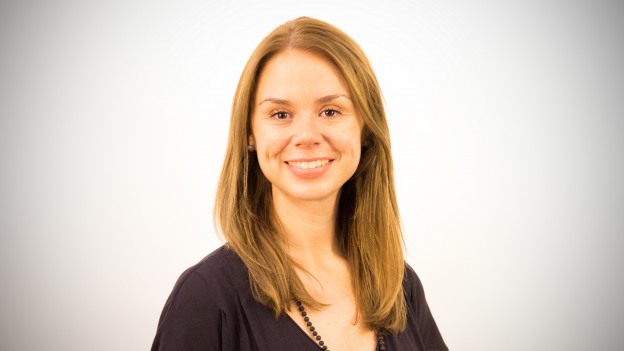Unsere vernetzte Welt verstehen

„Transforming Entrepreneurial Thinking into Dynamic Capabilities“
Vom 2.-4. Juni 2017 fand die Strategic Management Society Special Conference “Transforming Entrepreneurial Thinking into Dynamic Capabilities” in Banff, Kanada statt. Führende Forscher aus dem Bereich des Strategischen Managements diskutierten auf der Konferenz den Stand der Forschung sowie relevante Fragestellungen für zukünftige Forschung. Die beiden HIIG-Forscherinnen Jessica Schmeiss und Martina Dopfer präsentierten auf der Konferenz ein Paper zum Thema Entrepreneurial Capabilities in unterschiedlichen Unternehmenskontexten (Startups und SMBs) und trafen damit genau den Nerv der aktuellen Forschung.
The Strategic Management Society is a prestigious organisation, connecting over 3,000 leading researchers and practitioners in the field of strategic management. The special conference in Banff was dedicated to the Dynamic Capability View (DCV), an established framework in Management Research that is based on the seminal papers by David Teece (1997). The DCV was first established as a new strategic lense on how firms can achieve competitive advantages in increasingly dynamic environments (Teece et. al., 1997). In that Dynamic Capabilities are not about doing things right but rather about doing the right things in the first place (Teece et. al., 2016). It has been applied as a theoretical lense in various literature streams such as strategic management, entrepreneurship and business model literature (Wilden et. al., 2016).
The intersection between Dynamic Capabilities and entrepreneurial thinking has been of particular interest to the strategic management research community. The special conference aimed to show and explain how Dynamic Capabilities as an overarching framework can help to explain the effect of entrepreneurial thinking on managerial practices like decision making, firm-level governance approaches and organizational structures. According to recent publications of leading scholars in the field, entrepreneurial thinking and concepts morphed into dynamic capabilities appears to be the single most important driver of long-term competitive success, in terms of survival, profitability and growth (Teece et. al. 2016; Wilden et. al. 2016). Jessica and Martina presented a research project that ties into this current stream of literature. The paper examines entrepreneurial capabilities related to Business Model Innovation (BMI) of managers in different contexts, namely startups and SMBs. It identifies four archetypes of managers, differentiated by their capability to identify opportunities and their capability to act on them.
One of the highlights of the conference was a panel discussion between two leading scholars of the Resource Based View (RBV) – Birger Wernerfelt and Jay Barney – and David Teece, the leading scholar behind the Dynamic Capabilities View (DCV). The DCV emerged from the RBV as a framework to analyse competitive advantage in changing environments. While the RBV focuses on creating sustainable competitive advantages through firm resources, the DCV is more concerned with „the firm’s ability to integrate, build, and reconfigure internal and external competences to address rapidly changing environments“ (Teece, 1997, p. 510), hence its competitive survival. In essence, scholars from both schools agreed that the RBV and DCV are complementary views on competitive advantage. During the panel discussion a number of questions were raised on the impact new digital technologies like big data analytics or AI will have on established views such as the RBV and DCV. The common agreement amongst the leading scholars was that these technologies are tools that fit into the existing framework. However, these technologies fundamentally change the way we work, interact and build relationships and may very well influence the way firms can generate competitive advantages in the future. Hence, the view that they are mere tools within an existing framework may be too limited. Interdisciplinary research at the intersection of management, governance and technology will be necessary to address the question of how digital technologies affect strategic management research.
Additionally, leading scholars in the field of strategic management proposed additional avenues for future research at the conference in Banff. First, how Dynamic Capabilities are build and evolve over time on an organisational level is still unclear. So far the DVC provides a valuable theoretical lense but the actual operationalisation of Dynamic Capabilities and their micro foundations is still in early stages. Second, on the level of the individual there is a lack of systematic attention on how managers activate and use Dynamic Capabilities. There is a substantial body of research on dynamic managerial capabilities that addresses the capabilities with which “managers create, extend, and modify the ways in which firms make a living” (Helfat & Martin, 2014, p. 1281). While this is a first step to “explain the relationship between the quality of managerial decisions, strategic change, and organizational performance” (Helfat & Martin, 2014, p. 1281), little is known about managerial and organisational processes that emerge from this. Future research could address how managers identify areas in which Dynamic Capabilities are needed and how, when and by whom they are selected. Third, greater attention should be paid to how managers deploy their Dynamic Capabilities portfolio in terms of timing, revising and renewing Dynamic Capabilities. Last, context is of utmost importance when studying Dynamic Capabilities both on an organizational and managerial level. The internal and external context determines how Dynamic Capabilities are built, managed and deployed. Future research could examine the extent to which context impacts Dynamic Capabilities.
The Entrepreneurship Research Lab will address these avenues for research in the future by expanding the paper on entrepreneurial capabilities in different context presented at the conference in Banff. Additionally, the inherently transdisciplinary setting at HIIG may provide a base for developing new perspectives on the impact of digital technologies on Dynamic Capabilities.
Referenzen
Teece, D. J., Pisano, G., & Shuen, A. (1997). Dynamic capabilities and strategic management. Strategic Management Journal, 18(7), 509–533.
Teece, D., Peteraf, M., & Leih, S. (2016). Dynamic Capabilities and Organizational Agility. California Management Review, 58(4), 13–35.
Wilden, R., Devinney, T., & Dowling, G. (2016). The Architecture of Dynamic Capability Research Identifying the Building Blocks of a Configurational Approach. The Academy of Management Annals, 10(1), 997–1076.
Helfat, C. E., & Martin, J. A. (2015). Dynamic managerial capabilities: Review and assessment of managerial impact on strategic change. Journal of Management, 41(5), 1281-1312.
Dieser Beitrag spiegelt die Meinung der AutorInnen und weder notwendigerweise noch ausschließlich die Meinung des Institutes wider. Für mehr Informationen zu den Inhalten dieser Beiträge und den assoziierten Forschungsprojekten kontaktieren Sie bitte info@hiig.de.
Dieser Beitrag spiegelt die Meinung der Autor*innen und weder notwendigerweise noch ausschließlich die Meinung des Institutes wider. Für mehr Informationen zu den Inhalten dieser Beiträge und den assoziierten Forschungsprojekten kontaktieren Sie bitte info@hiig.de

Jetzt anmelden und die neuesten Blogartikel einmal im Monat per Newsletter erhalten.
Digitale Zukunft der Arbeitswelt
Der Human in the Loop bei der automatisierten Kreditvergabe – Menschliche Expertise für größere Fairness
Wie fair sind automatisierte Kreditentscheidungen? Wann ist menschliche Expertise unverzichtbar?
Gründen mit Wirkung: Für digitale Unternehmer*innen, die Gesellschaft positiv gestalten wollen
Impact Entrepreneurship braucht mehr als Technologie. Wie entwickeln wir digitale Lösungen mit Wirkung?
Bias erkennen, Verantwortung übernehmen: Kritische Perspektiven auf KI und Datenqualität in der Hochschulbildung
KI verändert Hochschule. Der Artikel erklärt, wie Bias entsteht und warum es eine kritische Haltung braucht.




